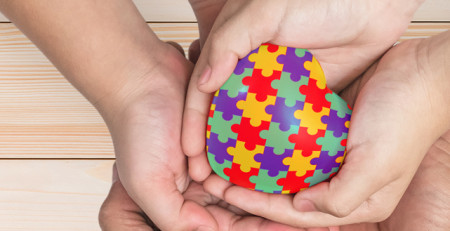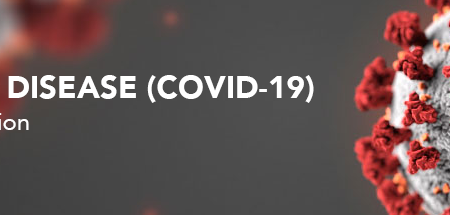Provider Alert! Psychosocial Care Interventions as First-Line Treatment for Children and Adolescents
Date: January 8, 2023
Attention: Behavioral Health Providers
Call to Action
Texas Children Health Plan (TCHP) encourages providers to continue to take measures to ensure your patients, our members, receive excellent care. TCHP is committed to optimizing the quality of care provided to our members with behavioral health condition(s). TCHP would like to share information on first-line psychosocial care recommendations for children and adolescents before and along with prescribing antipsychotics.
Why it Matters
Antipsychotic medications are frequently prescribed for nonpsychotic conditions, for which psychosocial care interventions are considered first-line treatment (American Academy of Child and Adolescent Psychiatry, 2011; Chen et al., 2021; Dinnissen et al., 2020; National Committee for Quality Assurance, 2023; Olfson et al., 2006). Safer first-line psychosocial interventions may be underutilized, and children and adolescents may unnecessarily incur the risks associated with antipsychotic medications (National Committee for Quality Assurance, 2023; Olfson et al., 2006).
Considering psychosocial interventions as first-line treatment is important and safer for patients to help decrease the risks associated with antipsychotic medications. TCHP encourages providers to work with their patients and their families to consider a plan of care that incorporates psychosocial care interventions as first-line treatment for patients with nonpsychotic conditions (National Committee for Quality Assurance, 2023). Psychosocial care interventions may include but are not limited to assertive community treatment (ACT), behavioral health case management, individual supportive therapy, cognitive-behavioral therapy (CBT), and contingency management. Psychosocial interventions, when clinically indicated, result in children not incurring unnecessary risks associated with antipsychotic medications.
Examples of Psychosocial Interventions
- Assertive community treatment (ACT) encompasses an array of services and interventions provided by a community-based, interdisciplinary, mobile treatment team American Academy of Child and Adolescent Psychiatry, 2023). The treatment team consists of case managers, peer support workers, psychiatrists, social workers, psychologists, nurses, and vocational and psychosocial rehabilitation specialists. The approach is designed to provide comprehensive, community-based psychiatric treatment, rehabilitation, and support to persons with serious mental health and substance use disorders, such as bipolar disorder and schizophrenia. A fundamental goal is to provide supports and help patients develop skills so they can maintain community living, avoid hospitalization, improve their quality of life, and strive for recovery.
The core features of assertive community treatment are individualization and flexibility of services based on recovery goals; small caseloads; assertive outreach; ongoing treatment and support, including medication; and 24-hour availability with crisis readiness and a range of psychosocial interventions, such as family psychoeducation, supported employment, dual-disorder substance abuse treatment, and motivational interviewing. There are not currently any active ACT teams for children in our service areas; however, we will be happy to coordinate a team of providers to wrap these services around your patient/our members.
An important component of the ACT model is behavioral health case management services. Behavioral health case management includes activities that assist an individual in gaining and coordinating access to behavioral health care and services appropriate to the patient’s needs. Case management services may include assessment, recovery planning, referral and linkage, monitoring, and follow up (Texas Administrative Code, 2020). Furthermore, behavioral health case management may include tiered care coordination based on the patients’ acuity levels, and/or intensive care coordination needs using a wraparound approach (American Academy of Child and Adolescent Psychiatry, 2023). Wraparound service planning involves team-based behavioral health care coordination for implementing a strengths-based plan of care for a child or adolescent. The process incorporates intensive, individualized behavioral health care planning (American Academy of Child and Adolescent Psychiatry, 2023).
- Individual supportive therapy entails providing individual psychotherapy services that are strength-based, youth-guided, and family-driven for the treatment framework (American Academy of Child and Adolescent Psychiatry, 2023). Individual supportive therapy occurs through structured therapy sessions with a licensed behavioral health professional.
- Cognitive-behavioral therapy (CBT) is utilized for a wide array of mental health and substance use disorders. This treatment modality combines behavioral techniques with cognitive psychology. The goal is to replace maladaptive behaviors and faulty cognitions with thoughts and self-statements that promote adaptive behavior (Halder & Mahato, 2019). One example is to replace a defeatist expectation, such as “I can’t do anything right,” with a positive expectation, such as “I can do this right.” CBT focuses primarily on the “here and now” and imparts a directive or guidance role to the therapist, a structuring of the psychotherapy sessions, and the alleviation of symptoms and patients’ vulnerabilities. Elements of cognitive-behavioral therapy include cognitive restructuring, exposure techniques, behavioral activation, relaxation training, self-monitoring, and relapse prevention.
- Contingency management is an evidenced-based psychosocial intervention designed for substance use disorders utilizing operant behavioral conditioning principles. Contingency management is an incentive-based approach, which rewards a client contingent upon meeting desired outcomes. Incentives found to be effective include both voucher/cash equivalents (guaranteed payment) and “prize-based” approaches that feature the chance to earn a large prize, while most chances are low value (Higgins &Silverman, 2008; Stitzer & Petry, 2006).
Next Steps for Providers
In summary, by utilizing psychosocial interventions, when clinically indicated, as first-line treatment before prescribing medications, children and adolescents may not incur the risks associated with antipsychotic medications. Additionally, TCHP offers Behavioral Health Case Management services available to members. Please view the referral form and a recent Provider Alert for more information on this service.
We kindly request that providers consider these psychosocial care interventions when determining their patients’ plans of care.
Providers may refer to the HEDIS Quick Reference for Use of First-Line Psychosocial Care for Children and Adolescents on Antipsychotics for additional information.
Resources:
- HEDIS toolkit on the Use of First-Line Psychosocial Care for Children and Adolescents on Antipsychotics (APP)
- Member Referral for Case Management
- Targeted Case Management and Rehabilitative Services Request Form
References:
American Academy of Child and Adolescent Psychiatry. (2023). Clinical update: Child and adolescent behavioral health care in community systems of care. Journal of the American Academy of Child and Adolescent Psychiatry, 62(4), 367-384.
American Academy of Child and Adolescent Psychiatry. (2011). Practice parameter for the use of atypical antipsychotic medications in children and adolescents. https://www.aacap.org/App_Themes/AACAP/docs/practice_parameters/Atypical_antipsychotic_Medications_Web.pdf
Chen, S., Barner, J. C., & Cho, E. (2021). Trends in off-label use of antipsychotic medications among Texas Medicaid children and adolescents from 2013 to 2016. Journal of Managed Care Specialty Pharmacy, 27(8). doi:10.18553/jmcp.2021.27.8.1035
Dinnissen M., Dietrich A., van der Molen J. H., Verhallen A. M., Buiteveld, Y., Jongejan, S, Troost, P. W., Buitelaar, J. K., Hoekstra, P. J., & van den Hoofdakker, B. J. (2020). Prescribing antipsychotics in child and adolescent psychiatry: Guideline adherence. European Child & Adolescent Psychiatry. 29(12),1717-1727. doi: 10.1007/s00787-020-01488-6.
Halder, S., & Mahato, A. K. (2019). Cognitive behavior therapy for children and adolescents: Challenges and gaps in practice. Indian Journal of Psychological Medicine, 41(3), 279-283. doi: 10.4103/IJPSYM.IJPSYM_470_18.
Higgins, S. T., & Silverman, K. (2008). Substance abuse treatment (4th ed.). The American Psychiatric Press.
National Committee for Quality Assurance. (2023). Use of first-line psychosocial care for children and adolescents on antipsychotics (APP). https://www.ncqa.org/hedis/measures/use-of-first-line-psychosocial-care-for-children-and-adolescents-on-anti-psychotics/
Olfson, M., Blanco, C., Liu, L.,Moreno, C., & Laje, G. (2006). National trends in the outpatient treatment of children and adolescents with antipsychotic drugs. Archives of General Psychiatry, 63(6),679-685.
Stitzer, M., & Petry, N. (2006). Contingency management for treatment of substance abuse. Annual Reviews of Clinical Psychology, 2, 411-434.
Texas Administrative Code. (2020). Mental health case management. https://texreg.sos.state.tx.us/public/readtac$ext.TacPage?sl=R&app=9&p_dir=&p_rloc=&p_tloc=&p_ploc=&pg=1&p_tac=&ti=26&pt=1&ch=306&rl=255#:~:text=(27)%20Mental%20health%20(MH,and%20monitoring%20and%20follow%20up
If you have any questions, please email Provider Relations at: providerrelations@texaschildrens.org.
For access to all Provider Alerts,log into:
www.thecheckup.org or www.texaschildrenshealthplan.org/for-providers.





